Shibori For The Future
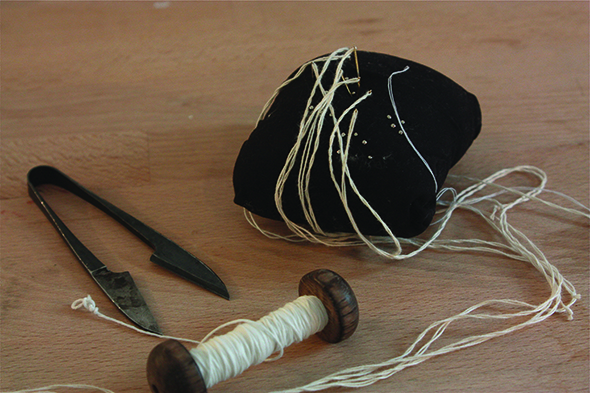
In the town of Arimatsu, Japan, a room of women gather, engaged in conversation as they use tools passed down for gen- erations to wring, tie and press reams of textiles into over fifty intricately knotted patterns. It has been this way, thoroughly unchanged, for over one hundred years in the Murase family. Traditionally used to create kimonos made of cotton, the time- honored technique of Shibori itself is over four hundred years old. While the craft has survived for generations in the Far East, it’s only just; Shibori has seen a significant decline over the years. Creative Director of Suzusan and fifth generation Shibori arti- san, Hiroyuki Murase is dedicated to breathing new life into this time-honored technique by producing a modern product that is relevant in Western context. It might strike one as a sharp juxta- position to see a sleek, minimalist column lamp rest on the floor of a chic urban dwelling, knowing it was crafted from an ancient technique, but that’s the idea.
Through this dedication to modern relevance, Suzusan offers two, seemingly unrelated products. The first product is a collection of one-of-a-kind shawls crafted from the Shibori technique, creating wearable representations of a centuries-old fine art. The process begins with materials such as cashmere, alpaca and silk, which are then hand-manipulated by four or five artisans and tied, sewn or folded before being dipped into small portions of saturating dye. The dye then lends itself to arrest- ing color contrasts, leaving the wringed sections unaffected, causing almost three-dimensional patterns. Like something of architecture rather than garment construction, utilizing skill and experience to craft a pre-conceived concept into a physical form, the end result is sold in luxury retailers throughout the world. No two shawls are alike, and it seems each is more uniquely beautiful than the last.
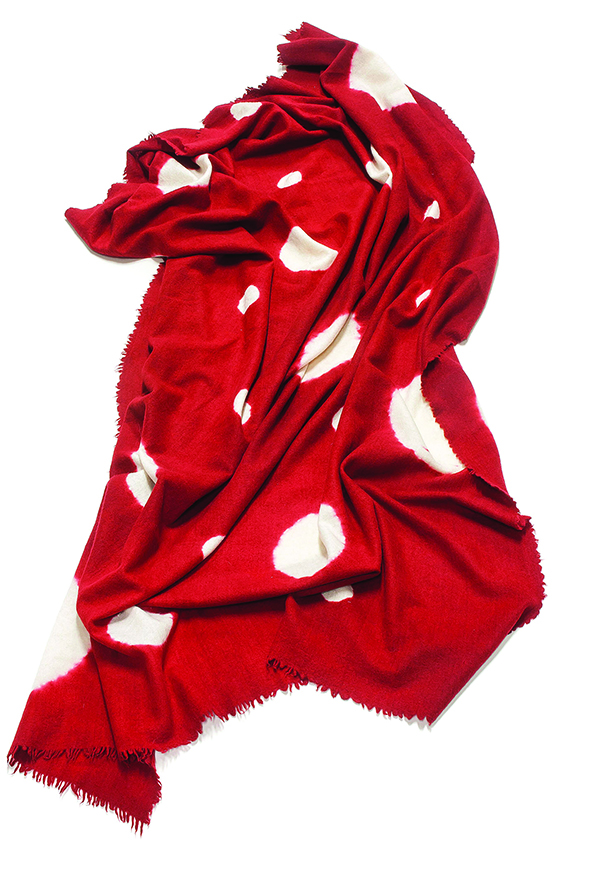
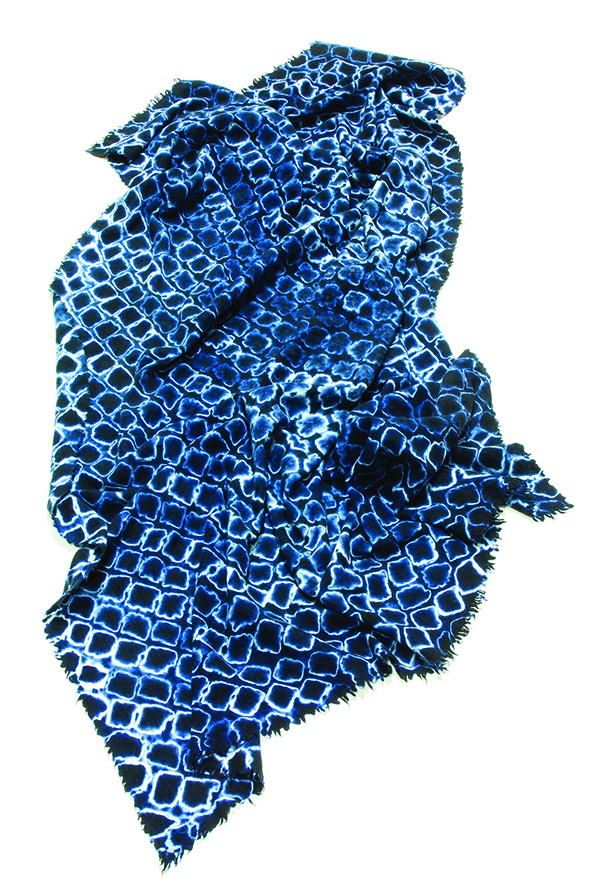
In 2008, Hiroyuki Murase shed a little light on the Shibori technique, further evolving it for modern consumption. Sophisticated lighting is the second product offered by Suzusan, emitting a unique glow that is achieved through refining three- dimensional patterns into fabric textiles. Crisp, white fabric is stretched over smooth light sources, exhibiting the intricate, handmade three-dimensional patterns crafted from Shibori and are removable for machine washing. Omitting the dying process on this product, this form of Shibori only entails wringing, tying and pressing to contort the fabric into unique patterns, and then heat-treating to permanently preserve each unique shape given to the material. Pendants, chandeliers, floor and table lamps and even small, accent lighting each boast the various distinc- tive patterns of these luminaries. Upon seeing them, one might never assume the modern aesthetic of these lights was achieved through what had been an antiquated and potentially irrelevant process.
Hiroyuki’s model of “Don’t just keep the tradition—create it” has drawn a beautiful textile method back from the brink of extinction, and applied it in a modern context. Though the Shibori process will never afford itself the sterile efficiency of mass production, everything created at Suzusan is patiently crafted out of skill, knowledge, experience, and a dedication to perfection, which is a rarity among our fast-paced society. Like the contrast of a modern light crafted from a four-hundred-year old-process, Shibori might be an ideal blend of respect for the past with a purpose in the future.
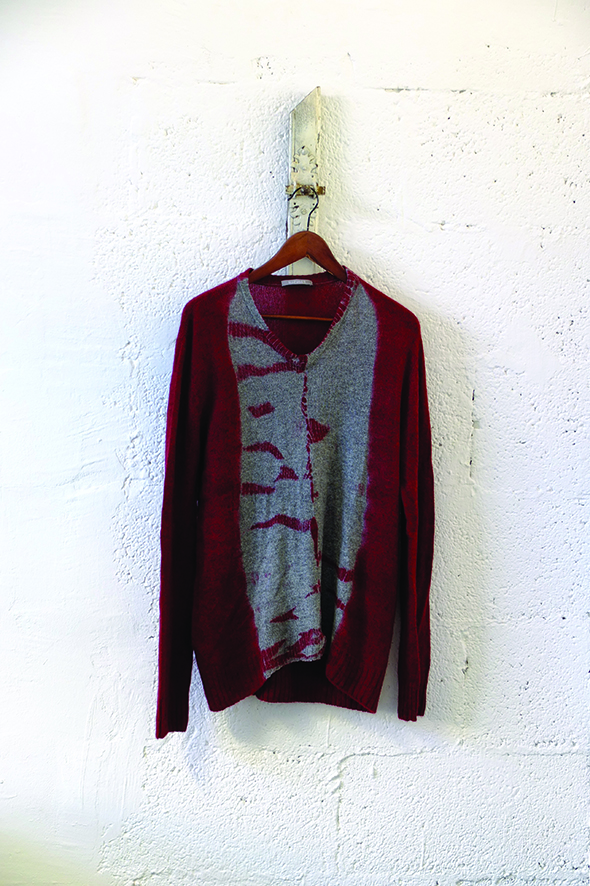
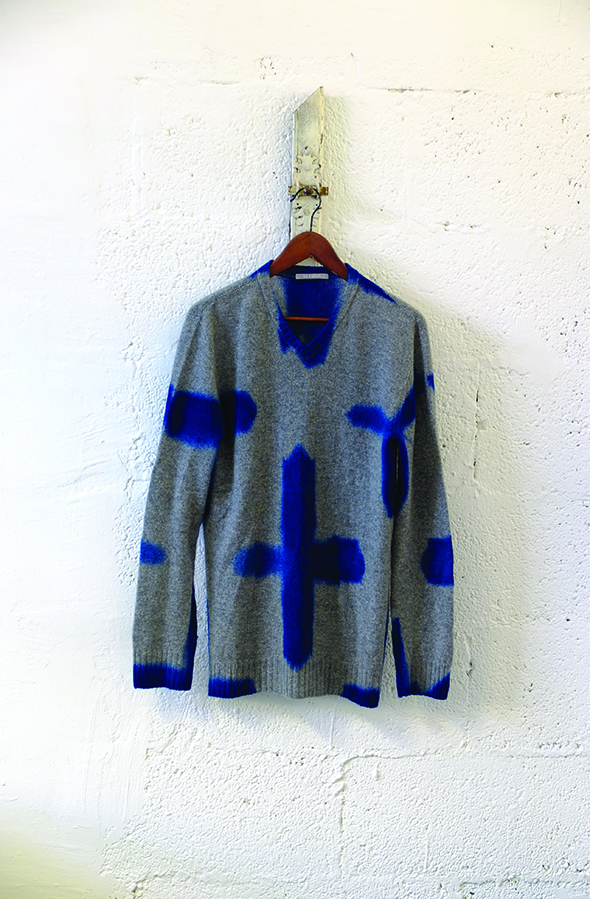
Text by Jennifer Richardson-Moulaison

